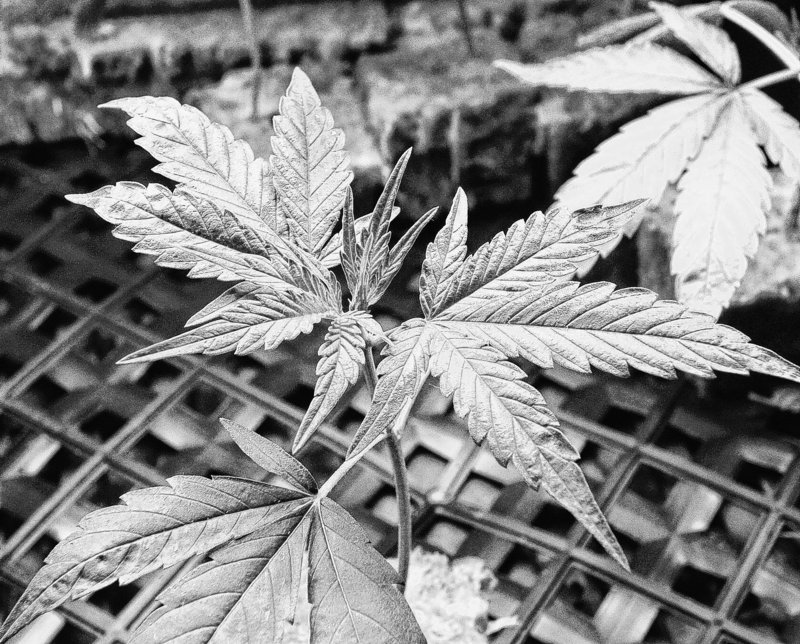PORTLAND – My last marijuana adventure was in the back of a ’64 Mustang full of teenagers, deep in a Louisiana cotton field — and I was far more worried about my mother’s wrath than about getting stoned. Claiming my experiment was “medicinal research” never occurred to me. And, yes, I did inhale just once, which just about killed me.
To this day, I still much prefer beer, but my curiosity about medical marijuana led me to Berkeley, Calif., the industry mecca. Overdue a midlife crisis, I grew a ponytail to blend in with the cannabis managers, gave my favorite handyman a week to paint my condo, and headed west from Maine.
Surprisingly, I found myself in a Twilight Zone of thirty-something “suits,” looking fresh from a GQ fashion shoot to pose as marijuana managers. It turns out image is everything to the new marijuana marketers. More surrealistically, I waited in line with the 900 people a day who had to choose from twenty-four possible brands of cannabis (more stressful than Starbuck’s). Can’t say I’ve ever seen that many “sick” people vertical at one time.
In California, practically speaking, cannabis is as ubiquitous and as legal as sushi — and almost as expensive, at an average market rate equivalent of about $5,000 per pound. I estimate that medical cannabis has about a $60 million market potential in Maine alone, and the existing, illegal trade in Maine is around $375 million.
It’s a drop in the bucket to the California industry, which sprouted Oaksterdam University that has graduated 13,000 students since 2006, many of them unemployed adults seeking growth-sector jobs in the cannabis industry. Today Oaksterdam is seen as essential to the city of Oakland’s revival through urban renewal. You don’t get more mainstream than that.
The good news about cannabis is its medical benefit for real people in the real world of pain and suffering. Take it from a cancer survivor: Four months of treatment among the terminally ill engendered my radical reassessment of medical marijuana use.
In California and Maine interviews, I heard about good results for a wide range of patients, some with relatively severe illnesses ranging from migraines to chronic nerve pain and depression; its value to cancer patients is well established. All told, roughly one percent to two percent of the total patient population benefits, many claiming freedom from the side effects of synthetic drugs.
I predict legalization would diminish the most obvious unhealthy practice of smoking cannabis, in favor of a whole array of food choices such as those produced by bakeries I visited on the West Coast. To suggest that some “patients” won’t abuse their access to legal cannabis would be disingenuous — look at the legal drug Oxycontin, just for starters. Ironically, the staid medical community — happy to prescribe such synthetics — are generally opposed to all holistic medicines, citing lack of studies to support cannabis’ benefits; yet they produce no new studies.
Understandably, the new visibility of cannabis brings very legitimate concerns over addiction and workplace safety. But it is already a staple product in America, already accepted by at least four generations.
Before the Great Depression, my grandfather smoked “loco weed” at the insistence of tribal Cherokee Indians in Oklahoma as a cure for his chronic headaches, and to good result. My son (I am told) could find “weed” easily available throughout his high school years in Maine.
Only when our denial is out of the closet can parents, educators, media, government and churches openly discuss responsible use the same way they are (finally) discussing fast-food addiction and childhood obesity.
Sadly, we no longer have resources to squander by jailing cannabis users, even if it were smart to do so, which it isn’t. We’ve already capsized Mexico due to our inability to regulate this market, and the sooner we deal with it the better — and not through law enforcement agencies or public policy, because it doesn’t work. It can’t work. Policemen were never meant to regulate an economic market that has morphed into a staple product for an estimated 10 percent of all Americans.
Like it or not, cannabis is here to stay. It must be regulated and taxed to produce new revenues for government, no different than alcohol and tobacco, and the sector has to learn how to properly manage legal assets. Good or bad, it is the best, most valid solution we have as a society.
– Special to the Telegram
Copy the Story Link
Send questions/comments to the editors.



Success. Please wait for the page to reload. If the page does not reload within 5 seconds, please refresh the page.
Enter your email and password to access comments.
Hi, to comment on stories you must . This profile is in addition to your subscription and website login.
Already have a commenting profile? .
Invalid username/password.
Please check your email to confirm and complete your registration.
Only subscribers are eligible to post comments. Please subscribe or login first for digital access. Here’s why.
Use the form below to reset your password. When you've submitted your account email, we will send an email with a reset code.